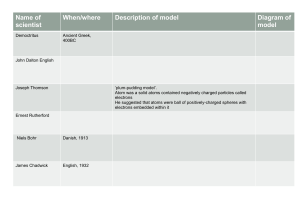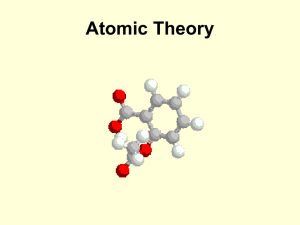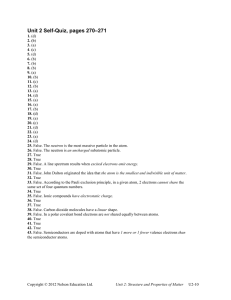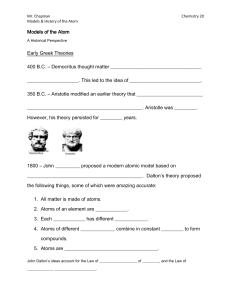Atomic Theory
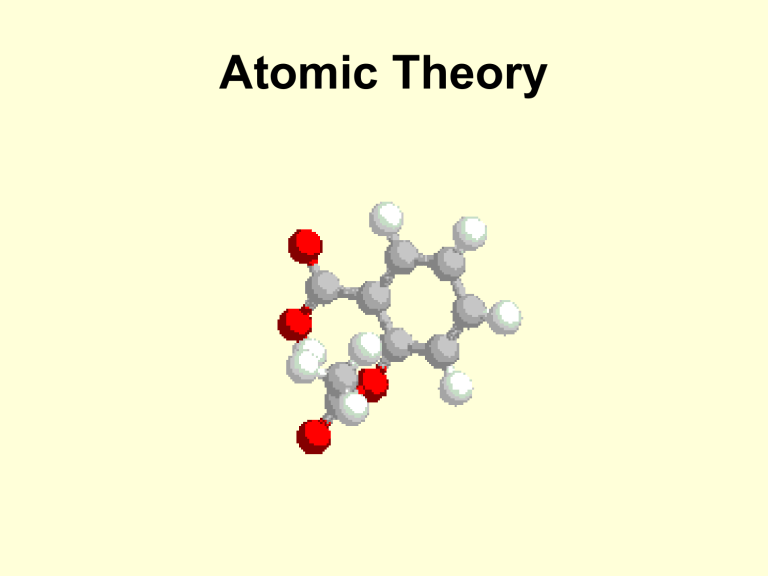
Atomic Theory
Let’s Take a Trip Through Time!
Democritus
400 B.C.
• There are various basic elements from which all matter is made
• Everything is composed of small atoms
• Some atoms are round, pointy, oily, have hooks, etc. to account for their properties
Democritus’s Model
John Dalton
• Introduced his ideas in 1803
• Each element is composed of extremely small particles called atoms
• All the atoms of a given element are identical, but they differ from those of any other element
• Atoms are neither created nor destroyed in any chemical reaction
Dalton’s Model
J.J. Thompson
1904
• Discovered electron
(negative particle) in the Cathode Ray
Experiment
• Plum Pudding model
1904
– Electrons in a soup of protons (positive charges)
– There is an equal number of positive and negative charges because the atom is neutral
Cathode Ray Tube Experiment
Electrons
Thompson’s Model
Protons
Ernest Rutherford
1910
• Nucleus Theory 1910
– alpha particle gold foil experiment
• An atom’s mass is mostly in the nucleus
• The nucleus has a positive charge because it contains the protons and because it is so large in mass it contains another particle called the neutrons(neutral)
• Electrons in fixed orbit
Alpha Particle Experiment
Rutherford Model
Niels Bohr
1913
• Planetary Model 1913
– Nucleus surrounded by orbiting electrons at different energy levels
– Electrons have definite orbits
• Worked on the Manhattan
Project (US atomic bomb)
Bohr’s Model
Neutrons
(No charge)
Electrons
(negative charge)
Protons (positive charge)
Ernst Schrödinger
Werner Heisenberg
• Quantum Mechanical
Model 1926
– Electrons are in probability zones called “orbitals”, not orbits and the location cannot be pinpointed and they are constantly moving
(they are not moving in circular orbits)
– Schrödinger and
Heisenburg’s Model of the
Atom is the Model still accepted today.
Schrödinger and Heisenburg’s
Model of the Atom
Atomic Theory
Democratus
400 BC 1803
John
Dalton
J J
Thomson
Niels
Bohr
1904 1910 1913 1926
Ernest
Rutherford
Schroedinger
/ Heisenberg
